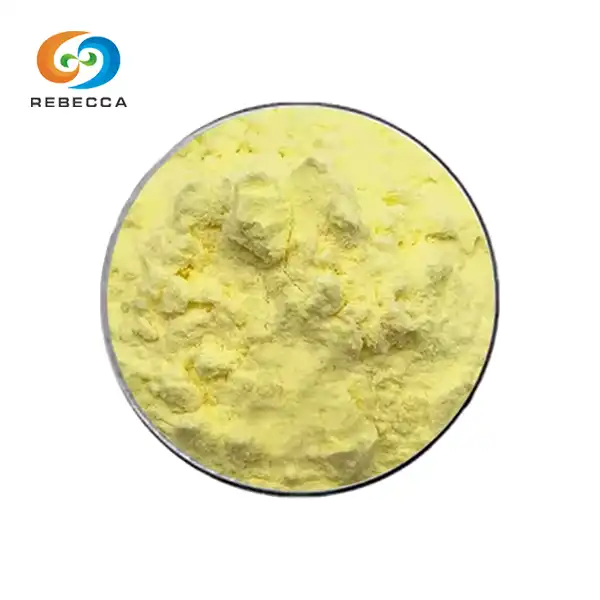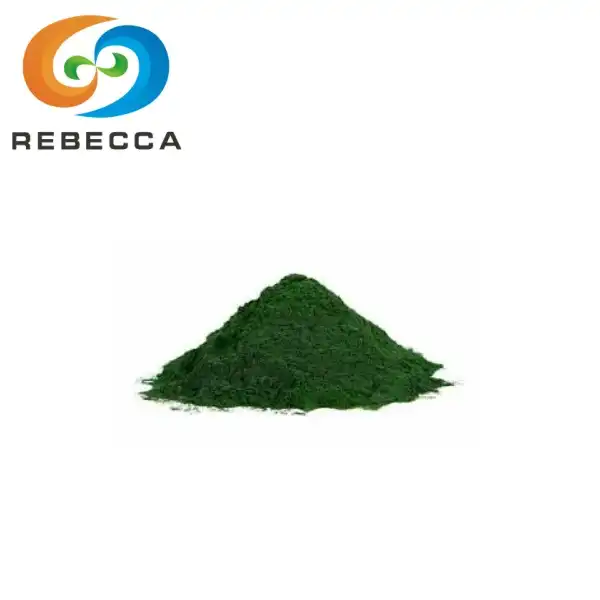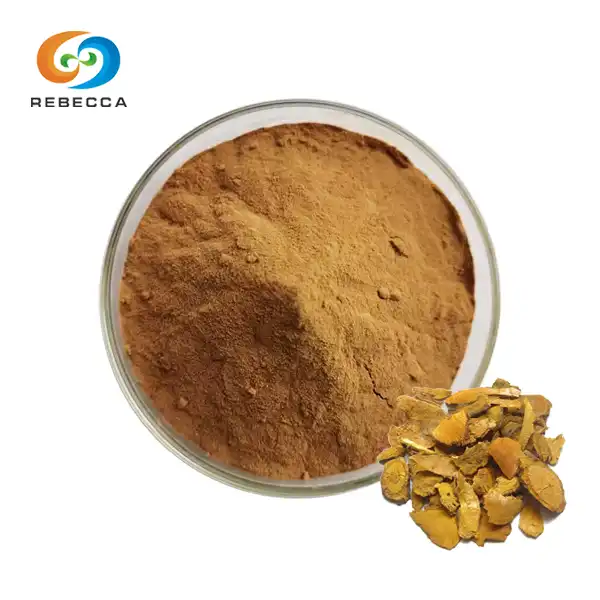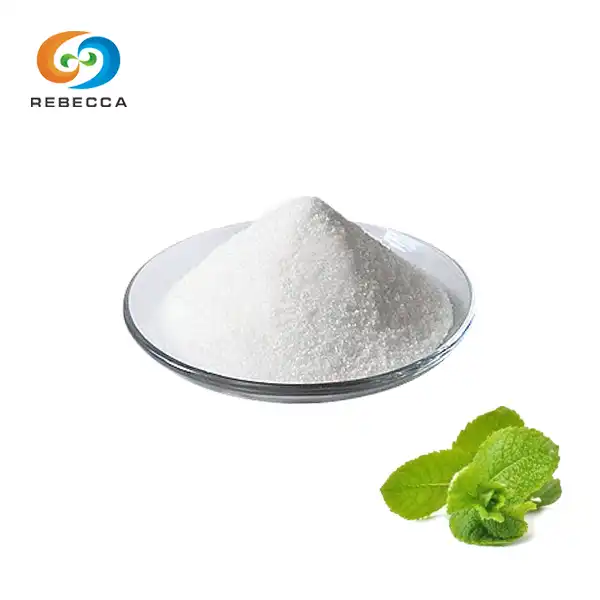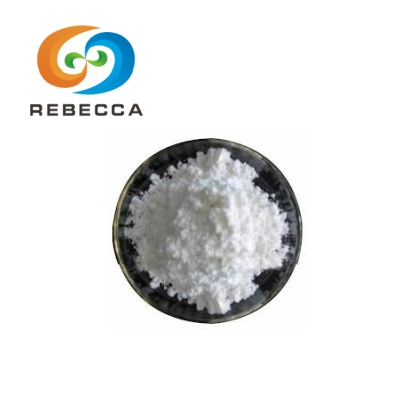Gastrodin VS Gastrodin Powder
The distinction between natural gastrodin and its processed counterpart, gastrodin powder, represents more than just a difference in physical state. These variations affect bioavailability, stability, manufacturing processes, and ultimately, their practical applications in both research and commercial settings. Understanding these differences is crucial for anyone considering the incorporation of this compound into their health regimen or research protocols.

Form
The physical form of gastrodin represents one of the most immediately apparent differences between the natural compound and its powdered variant. Natural gastrodin, as found in Gastrodia elata rhizomes, exists as part of a complex botanical matrix. Within the plant tissue, gastrodin molecules are embedded alongside numerous other phytochemicals, including polysaccharides, amino acids, trace elements, and various other bioactive compounds that work synergistically to create the plant's overall therapeutic profile.
In its natural state, gastrodin is integrated into the cellular structure of the Gastrodia elata rhizome, where it exists alongside fiber, moisture, and other plant constituents. This natural occurrence means that the gastrodin is part of a whole-food matrix, which can influence its absorption, metabolism, and overall bioactivity when consumed. The presence of these additional compounds may enhance or modify the way gastrodin functions in biological systems, a phenomenon often referred to as the "entourage effect" in natural product science.
Gastrodin powder, on the other hand, represents a highly refined and concentrated form of the active compound. Through sophisticated extraction and purification processes, gastrodin is isolated from the plant matrix and transformed into a standardized powder with consistent potency levels. This transformation results in a product that typically contains 99% pure gastrodin, dramatically increasing the concentration of the active ingredient compared to its natural source.
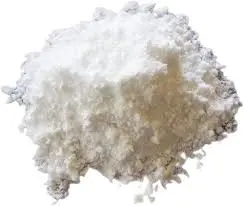
The powder form offers several practical advantages in terms of handling, storage, and formulation. Unlike fresh or dried plant material, gastrodin powder has a uniform particle size, consistent flow properties, and predictable dissolution characteristics. These physical properties make it ideal for various applications, from pharmaceutical formulations to dietary supplements, where precise dosing and reliable performance are essential.
Furthermore, the powder form eliminates the variability inherent in natural plant materials. While the gastrodin content in Gastrodia elata rhizomes can vary significantly depending on factors such as growing conditions, harvest timing, and storage methods, gastrodin powder provides a standardized product with consistent potency. This standardization is particularly valuable in research settings where reproducible results are paramount, and in commercial applications where regulatory compliance requires precise active ingredient content.
Preparation Process
From natural gastrodin to gastrodin powder involves a sophisticated series of extraction and purification processes that significantly alter the compound's characteristics and properties. Understanding these preparation methods provides insight into why the two forms differ so substantially in their applications and effectiveness.
Traditional preparation of gastrodin begins with the careful harvesting of Gastrodia elata rhizomes, typically during the autumn months when the gastrodin content reaches its peak. The harvested rhizomes undergo initial processing, which may include washing, sorting, and either fresh processing or controlled drying to preserve the active compounds. In traditional Chinese medicine, these rhizomes might be sliced and dried for direct use or processed through steaming or other traditional methods to enhance their therapeutic properties.
The transformation into gastrodin powder requires a much more complex and technologically advanced approach. The process typically begins with the selection of high-quality Gastrodia elata rhizomes that have been tested for optimal gastrodin content. These raw materials then undergo a series of extraction procedures designed to selectively isolate the gastrodin while removing unwanted plant materials and impurities.
Modern extraction techniques for producing powder often employ methods such as water extraction, alcohol extraction, or more advanced techniques like supercritical fluid extraction. Each method offers specific advantages in terms of yield, purity, and preservation of the compound's bioactivity. Water extraction, being the most traditional approach, uses varying temperatures and pH conditions to optimize gastrodin solubility while minimizing the extraction of unwanted compounds.
Following extraction, the resulting solution undergoes concentration through processes such as evaporation under reduced pressure, which helps preserve heat-sensitive compounds. The concentrated extract then proceeds through purification steps that may include filtration, crystallization, and chromatographic separation to achieve the high purity levels characteristic of pharmaceutical-grade gastrodin powder.
The final steps in powder production involve spray drying or freeze drying to convert the purified extract into a stable powder form. These drying processes are carefully controlled to maintain the compound's stability and bioactivity while achieving the desired particle size and flow characteristics. Quality control testing throughout the process ensures that the final powder meets specifications for purity, potency, and safety.

Main Uses
The applications and uses of gastrodin versus gastrodin powder reflect their distinct characteristics and the different needs they address in various fields. These applications span from traditional medicine practices to cutting-edge pharmaceutical research, each leveraging the unique properties of the respective forms.
Natural gastrodin, as part of whole Gastrodia elata preparations, has been used in traditional Chinese medicine for over two millennia. Historical texts document its use for treating conditions related to the nervous system, including headaches, dizziness, epilepsy, and cognitive disorders. In traditional practice, the whole rhizome is often prepared as decoctions, tinctures, or incorporated into complex herbal formulas where it works synergistically with other medicinal plants. This traditional approach values the holistic effect of the entire plant matrix rather than focusing solely on isolated compounds.

Contemporary research has validated many of these traditional uses, demonstrating that gastrodin exhibits neuroprotective, anti-inflammatory, and cognitive-enhancing properties. However, the variability in natural preparations has sometimes made it challenging to achieve consistent therapeutic outcomes, leading to increased interest in standardized extracts and purified compounds.
Gastrodin powder has opened up entirely new possibilities for application due to its standardized nature and high concentration. In pharmaceutical research, it enables precise dosing studies that are essential for understanding dose-response relationships and establishing optimal therapeutic ranges. Researchers can now conduct clinical trials with greater confidence in dosing accuracy and reproducibility, leading to more reliable data on the compound's therapeutic potential.

The supplement industry has embraced powder for its ability to provide consistent potency in various formulation types. Unlike natural plant material, which can be bulky and variable in content, gastrodin powder can be easily incorporated into capsules, tablets, and other delivery forms with precise dosing. This standardization is particularly valuable for consumers who want predictable effects and healthcare providers who require reliable therapeutic outcomes.
Rebecca: Gastrodin Powder Manufacturer
As a leading gastrodin powder supplier in the industry, Rebecca Bio-Tech specializes in providing premium quality gastrodin extract that meets the highest standards for purity and potency. Our product is meticulously extracted from carefully selected Gastrodia elata rhizomes and refined to achieve an impressive 99% gastrodin content through advanced HPLC testing methods.
Whether you're conducting research, developing new products, or seeking a reliable source for ongoing manufacturing needs, Rebecca Bio-Tech offers the expertise and quality assurance you need. Our team of specialists is dedicated to supporting your success with comprehensive technical support and flexible supply solutions tailored to your unique requirements.
For detailed product specifications, custom formulation support, or to discuss your specific needs, we invite you to connect with our team. Reach out to us at information@sxrebecca.com.
References
1. Kumar, H., et al. (2020). Gastrodin: A comprehensive review of its pharmacological properties and therapeutic potential. Phytotherapy Research, 34(11), 2854-2875.
2. Zhang, L., & Wang, J. (2019). Extraction and purification technologies for gastrodin from Gastrodia elata. Journal of Pharmaceutical and Biomedical Analysis, 168, 233-242.
3. Chen, M., et al. (2021). Neuroprotective effects of gastrodin: Current evidence and future perspectives. Neurochemistry International, 144, 104-118.
4. Liu, Q., & Li, S. (2018). Traditional uses and modern applications of Gastrodia elata: A systematic review. Evidence-Based Complementary and Alternative Medicine, 2018, 3692864.
